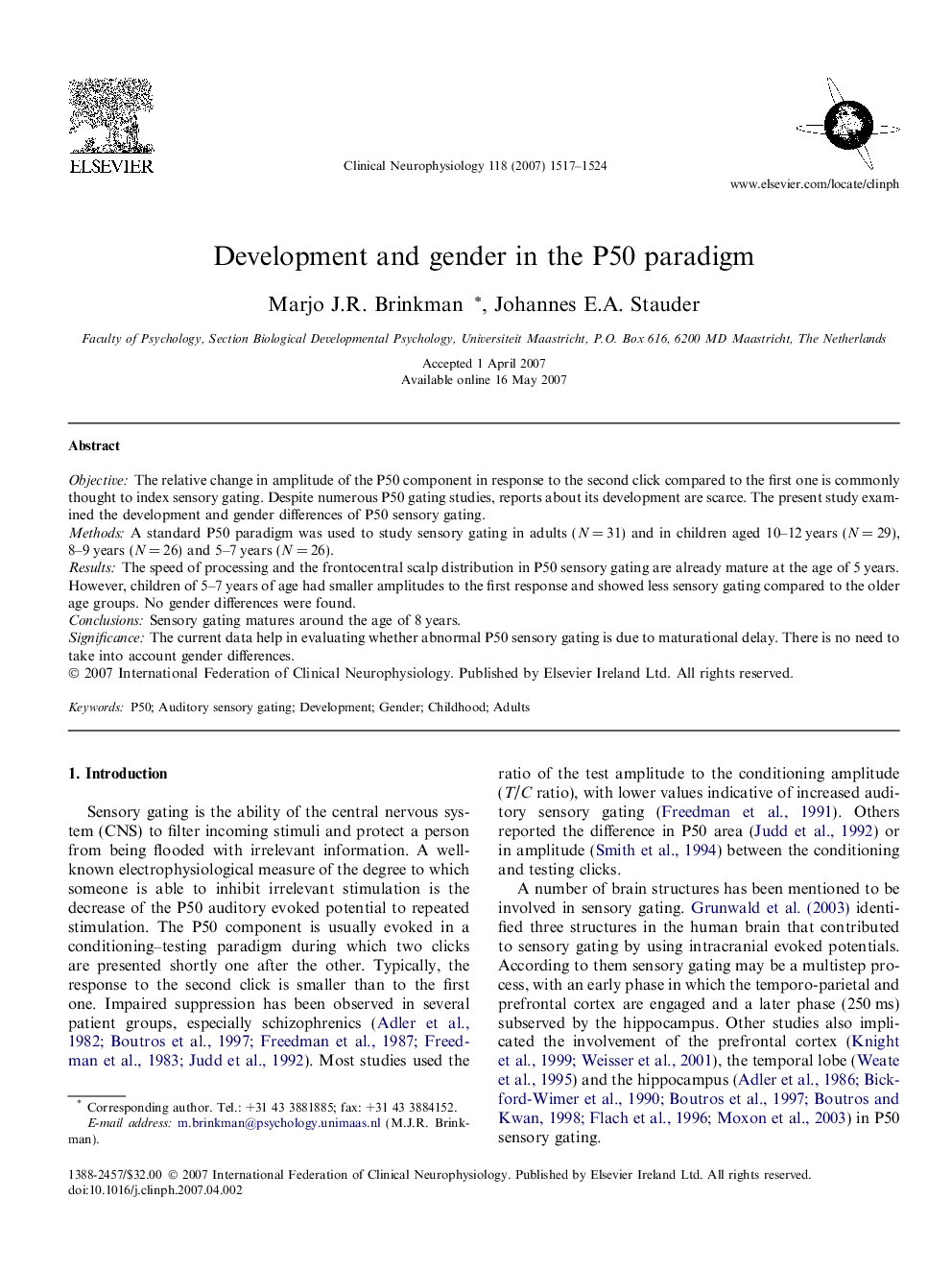| Article ID | Journal | Published Year | Pages | File Type |
|---|---|---|---|---|
| 3047625 | Clinical Neurophysiology | 2007 | 8 Pages |
ObjectiveThe relative change in amplitude of the P50 component in response to the second click compared to the first one is commonly thought to index sensory gating. Despite numerous P50 gating studies, reports about its development are scarce. The present study examined the development and gender differences of P50 sensory gating.MethodsA standard P50 paradigm was used to study sensory gating in adults (N = 31) and in children aged 10–12 years (N = 29), 8–9 years (N = 26) and 5–7 years (N = 26).ResultsThe speed of processing and the frontocentral scalp distribution in P50 sensory gating are already mature at the age of 5 years. However, children of 5–7 years of age had smaller amplitudes to the first response and showed less sensory gating compared to the older age groups. No gender differences were found.ConclusionsSensory gating matures around the age of 8 years.SignificanceThe current data help in evaluating whether abnormal P50 sensory gating is due to maturational delay. There is no need to take into account gender differences.
